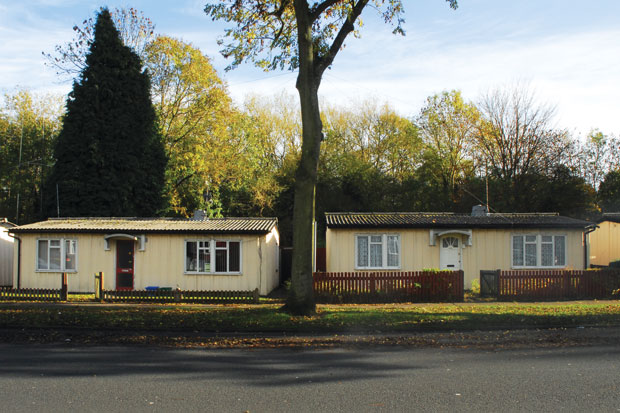Sir Winston Churchill did not invent the prefab, but on 26 March 1944 he made an important broadcast promising to manufacture half a million of them to ease the new housing emergency caused by enemy bombs and the continued growth of inner-city slums.
He went on to claim that these easy-to-assemble, factory-made bungalows would be ‘far superior to the ordinary cottage’. Readers of this richly illustrated, hard-hitting little book will find that Churchill was right.
The new prefab — an early prototype immediately went on show at the Tate Gallery, of all places — did not meet the approval of George Bernard Shaw, who called it ‘Heartbreak House’ and that ‘Damn Tin Can’ — but seems to have been hugely enjoyed by most of those lucky enough to live in one.
Costing the government only a few hundred pounds to make, each home came with its own indoor toilet, bath, gas cooker, refrigerator, coal fire and, most amazing of all, heated towel rails.
More significant than all their ‘mod cons’, these so-called ‘palaces for the people’ also offered their occupants a shared sense of community little known in Britain since — and certainly never noted in the tower blocks that started shooting up 15 years later. According to the author, living on a prefab estate was like being a permanent guest at a Butlin’s Holiday Village.
I was delighted to learn that Lord Kinnock, who once dreamt of living in Downing Street, lived in a prefab for 24 years, and that Admiral Lord West of Spithead was actually born in one. And that an untitled bloke called Eddie O’Mahony still occupies and loves the Surrey prefab into which he moved so excitedly nearly 70 years ago. ‘In 1946 you had to be very, very posh to have a house with an inside toilet,’ he recalls.








Comments
Join the debate for just £1 a month
Be part of the conversation with other Spectator readers by getting your first three months for £3.
UNLOCK ACCESS Just £1 a monthAlready a subscriber? Log in